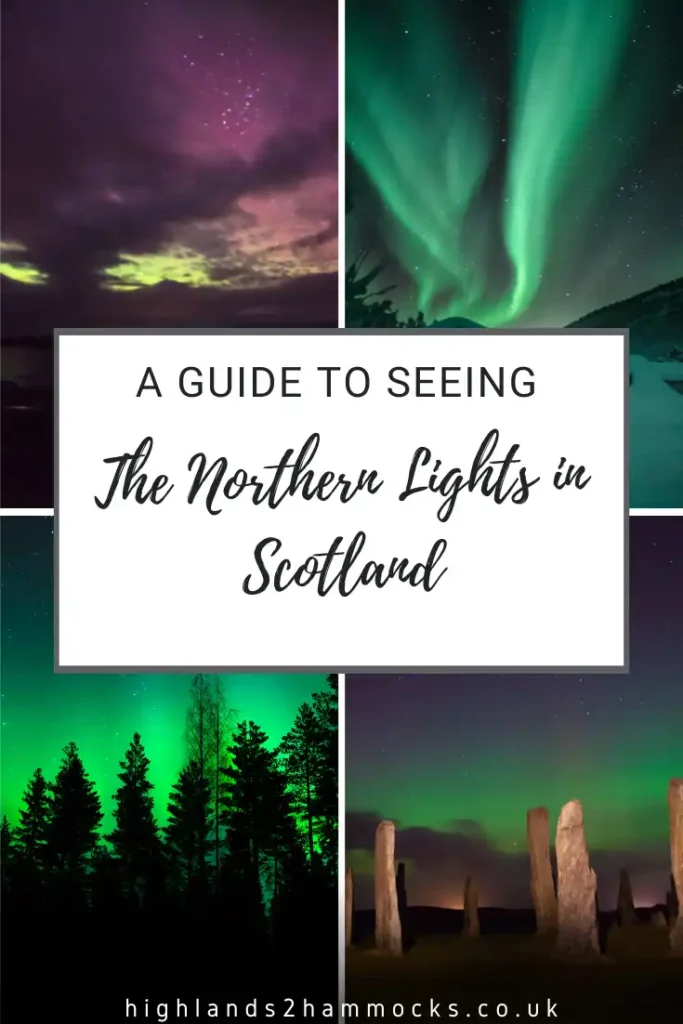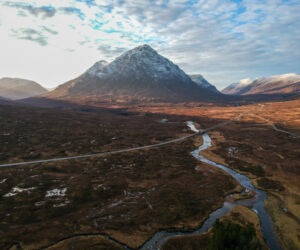A sight like nothing else in this world, the Aurora Borealis is one of the most popular bucket list items for everyone on Planet Earth. As the deadly electromagnetic rays ejected from the sun millions of miles away finally collide with the vulnerable and isolated blue marble that soars through an infinite space, something really quite magical happens.
In Scotland, despite it sitting quite low in latitude on the map, we are still fortunate enough to witness the Aurora Borealis if the conditions happen to be just right. We have been lucky enough to see this bucket list light show on two seperate occasions now and I can say that each of these times has been an unforgettable event.
In this guide, we are going to discuss our top tips for spotting the Aurora Borealis in Scotland, such as when to visit, what weather is the best, and where you need to go, as well as other travel tips that will make your northern lights experience an unforgettable adventure. Read on to find out how you can see the northern lights on your next visit to the Scottish highlands.
No time to read now? No problem, save a pin to your Pinterest board for later!
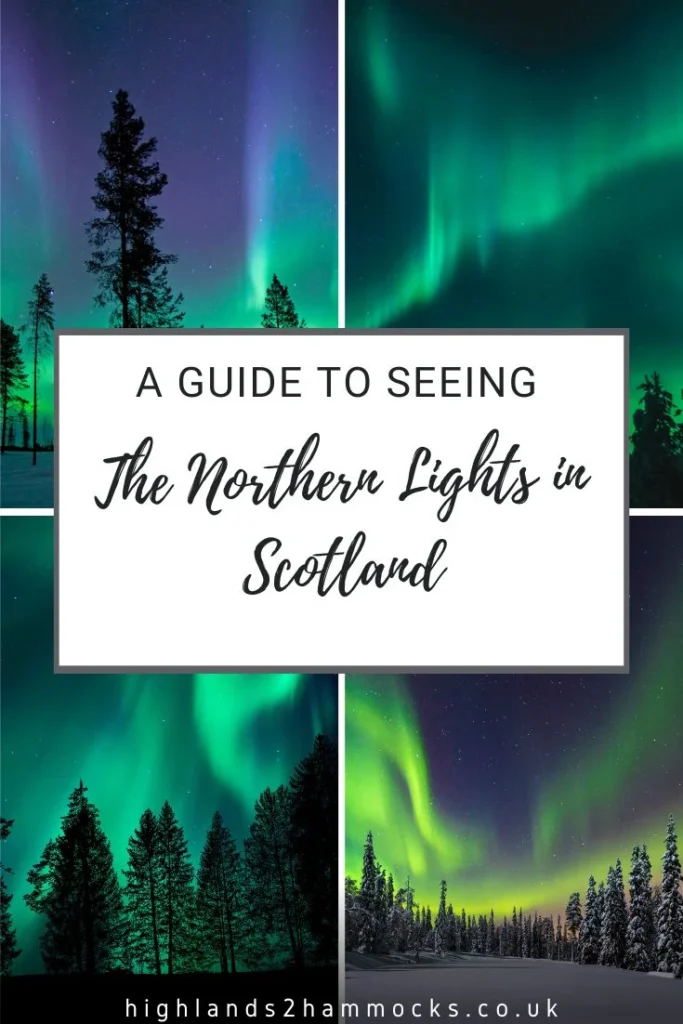
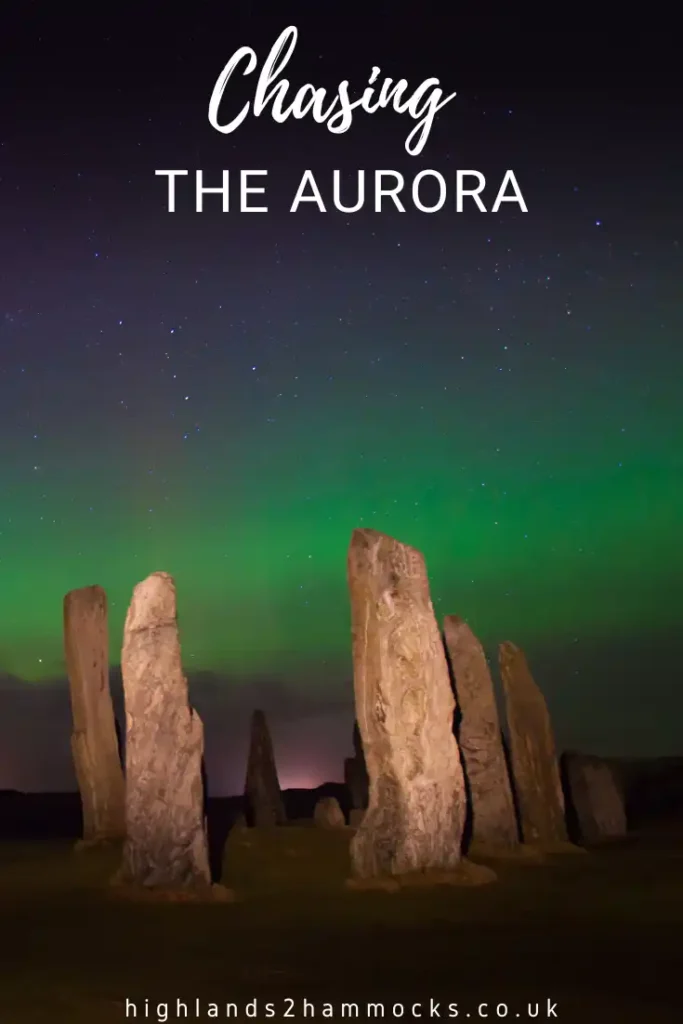
How to Photograph the Night Sky (Astrophotography and Northern Lights Photography guide)
Table of Contents

What are the Northern Lights (Aurora Borealis)?
The magnetic field that is generated by the movement of molten magma deep beneath the earths core, so minute that it barely spins the needle of a compass, is the only defence that we have against the solar flares that batters our home planet, day and night. When this electromagnetic energy meets the defensive sphere that sits thousands of miles from the surface, it is repelled off back into space leaving no trace of it ever having arrived.
Except, of course, for those lucky enough to be in the right place and the right time. For those lucky few, the dancing light show of the Aurora is the beautifully deadly evidence of the inhospitability of outer space.
At the polar centres of the North and South poles, as with the field of a magnet, the magnetic force is weaker than elsewhere on earth. The direction of the magnetic energy is perpendicular to the surface, rather than parallel like at the equator, meaning that the repulsion of the solar flares is not as strong. The result of this weakening of the magnetic field is the energising of the upper atmosphere by the solar energy as it comes closer to earth than should be possible, giving way to what we perceive as a spectacular light show like nothing else in the universe.
The dancing green, yellow, and often pink hues of the northern lights.
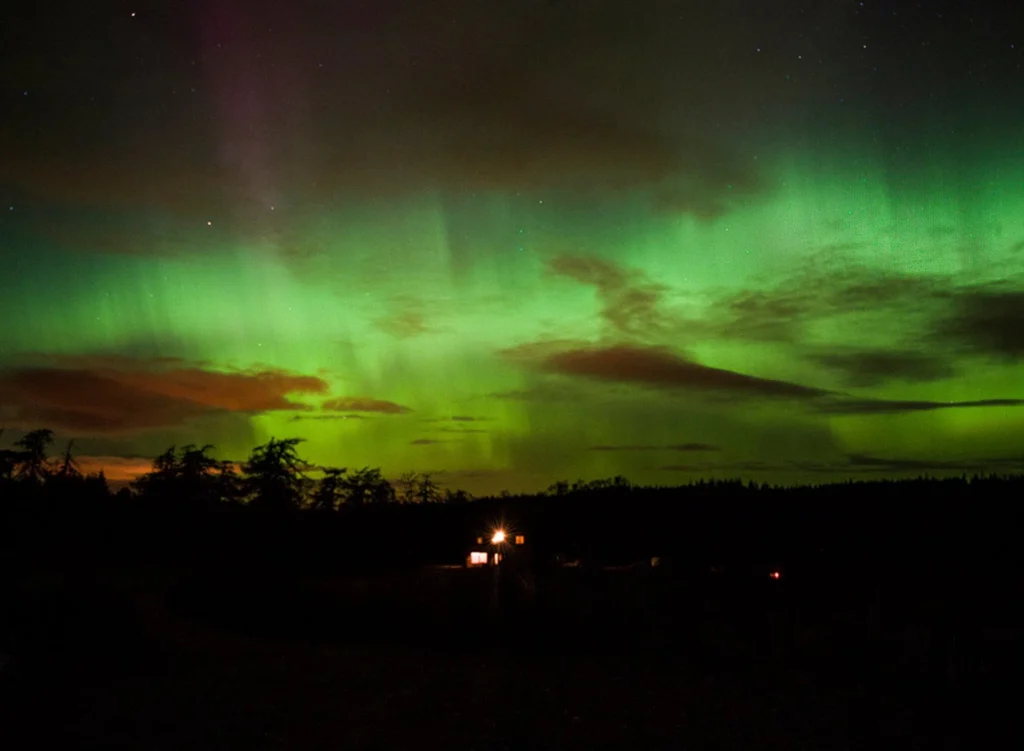
What to Consider when Photographing the Northern Lights
As one of the earths most sought after natural phenomena, the Northern Lights are a rather pernickety sight to see. The location must be correct; can’t be too far south and there can’t be a large city to the north of you (light pollution). The weather has to be spot on; any cloud coverage on the horizon will shield the dancing lights. The moon has to be just right; anything over a half moon in the sky will blind you from the faint lights of the aurora. And on top of all of that, the sun has to be actively ejecting flares, which is not a predictable or all that regular thing.
It is no surprise, therefore, that the majority of the population have not witnessed the Northern Lights in person. Despite all of these cards being set against you, however, if you know what you are doing then seeing the Aurora can be fun and exciting adventure in the Scottish Highlands. Let’s break it all down into what the perfect conditions of all of the above variables will be for spotting these elusive lights.
Season:
The season is the main factor to consider when it comes to viewing the Aurora Borealis in Scotland, given its northerly location and long summer nights. During the peak of the summer solstice, the sky in the highlands of Scotland barely gets dark as the sun dips below the horizon just enough to reduce the lighting to a constant dusk, before rising again about 4 hours later.
The location of the galactic core (the part of the Milky Way that will give the best stargazing experience) also varies throughout the year. Unfortunately, the core itself only rises above the horizon during the night in the middle of summer in the northern hemisphere, meaning that in the far north where the nights are latest, you will not be able to see it. However, during the Autumn months in the north of Scotland, the core sits just beneath the horizon at the beginning of Black Hour (the darkest period of the night).
We would, therefore, recommend September to November as the best time of year for stargazing if you are looking for Milky Way views and photographs in Scotland.

Location:
When it comes to viewing the lights, you may think that you need to head as far north as north will take you, however, that may not be necessary. Sightings of the lights have been reported as far south as Loch Lomond during strong solar storms, due to the national parks low light pollution and northerly situation from the populated central belt.
The best location for viewing the lights that we have found is the northern coastline of Aberdeenshire, beside the town of Cuilin. With nothing but ocean to the North, there is very little light pollution to spoil you view. Failing that, heading into the region of Wester Ross to the north west of Inverness is always a good location as well, due to its remote villages giving off very little light pollution.
Weather:
It goes without saying that a clear night sky is the optimal condition for spotting the northern lights in Scotland. However, if you have ever visited here before you will know that this is not an all too common occurrence. Luckily, it is only part of the sky that needs to be clear – the north. If there are clouds to the south then that is okay and shouldn’t impede your vision (so long as they don’t move).
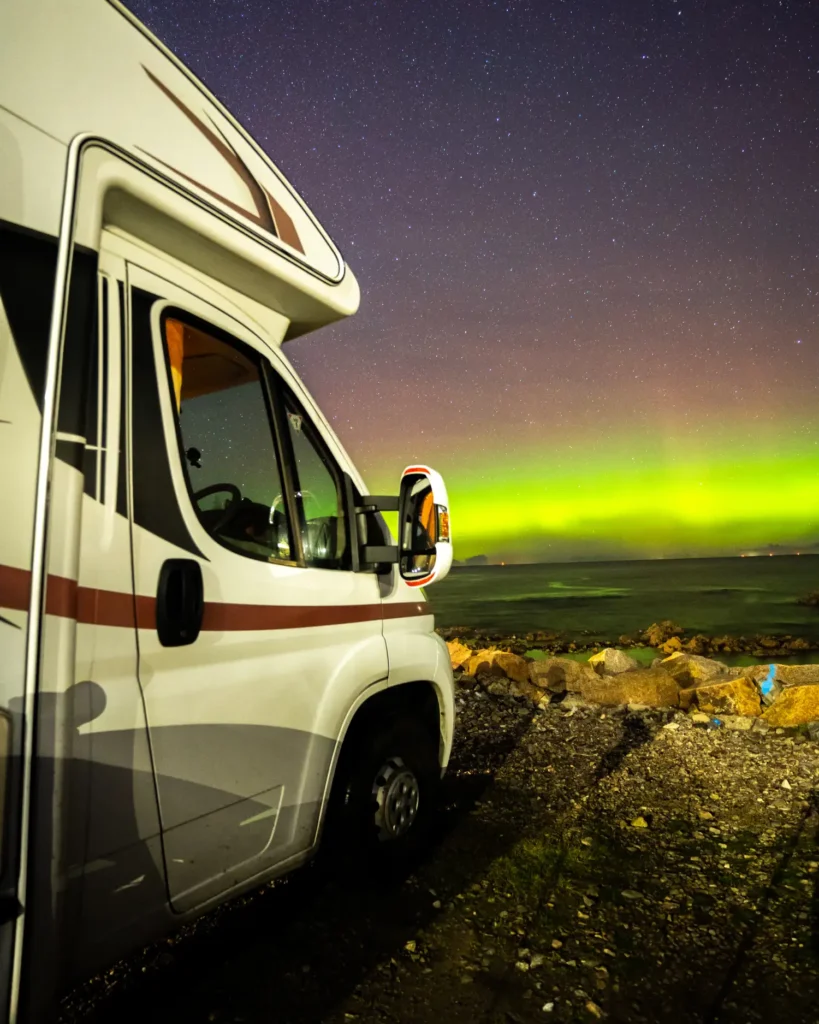
Moon Coverage:
Timing your northern lights adventure with the cycle of the moon is crucial in order to avoid a full moon blowing out your night vision. We like to use the app PhotoPills to plan our night photography adventures as this details the cycle of the moon, its position, and also the location of the galactic core and the milky way in the sky, which helps deliver some stunning astrophotography shots.
Solar Activity:
The most crucial of all of the above is simply the activity of the sun. In order to produce a strong Aurora, the sun has to be ejecting a large amount of flare (electromagnetic waves). This is completely unpredictable on long-term basis, however, due to the smarty pants scientists who study the sun, it is entirely predictable when a flare is likely to hit in the next couple of days. We use the app AuroraWatch on our phones to get notifications when the solar activity is high, and we also use Facebook groups to hear from the experts as to when they expect the conditions to be perfect.
Below is a list of our top recommendations of pages and groups to join
– Scotland’s Nightsky (Andrew also has a beautiful book on astrophotography in Scotland – A Guide to Scotland’s Night Sky)
– Aurora Watch UK

Planning Your Trip
We use the below booking platforms to plan our trips. We hope you find them useful too!
How to Prepare for Your Star Gazing Adventure
Before you head out on location, it is important to make sure that you pack and wear the perfect amount of layers and bring the right equipment with you. You can expect it to be a long and cold night staring at the sky and the last thing you want to have to do when in the middle of a spectacular aurora show is head home as you are too cold. You also do not want to miss capturing the memories of the aurora, which is why the perfect photography gear is also a must-have accessory. You never see it again so make sure to take a lot of photos.
What to Wear for the Northern Lights
When it comes to dressing for any stargazing mission, the key word is layers. As with hiking, we always wear and pack as many layers as we can when we head out to see the stars as this means you can adjust your coverage as you see fit. Below is a list of the clothes that we typically wear when we are out at night in Scotland.
– Baselayer (thermal long-sleeve top)
– T-shirt (long or short sleeve)
– Jumper with hood
– Heavy waterproof jacket
– Thermal leggings
– Trousers
– Thin socks
– Thick socks
– Hiking boots (to shield your feet from the cold earth)
– Scarf
– Hat
– Gloves
We also pack some essential items to ensure that we can keep warm and insular ourselves from the cold wind
– Waterproof blanket to sit on
– Cosy blanket to cover our knees
– Camping chair to get comfortable
– Reusable hand warmers
– Flask with hot drink (juice or hot chocolate)
– Head torch with red light capability (to protect your night vision)

Photography Equipment for the Northern Lights
Due to the rarity of the a clear night in Scotland, we would recommend investing in some camera gear to capture the memories that you will create when chasing the Milky Way. This does not need to be a hugely expensive setup, as there are even some mobile phone cameras that are capable of capturing the show. Below is the base level of camera specifications that we would recommend for capturing this low light spectacle.
– Camera with ISO of >6400
– Manual focus capability
– Exchangeable lens with the below specs
– Aperture <3.5
– Zoom <35mm
– Manual focus capability
We also recommend investing in the below equipment to facilitate your photography session
– Sturdy camera stand that can withstand a gentle breeze (can be a phone stand if your phone shoots low light)
– Remote camera shutter (if the camera doesn’t have an interval shooting function)
Photography Equipment
Main Photography Camera – Sony A7v Mirrorless Camera and Sony A7iii Mirrorless Camera
Microphone – Sony Mic ECM-B1M
Main Lens – Tamron 17-28mm f/2.8
Zoom Lens – Tamron 70-180mm f/2.8
Camera Tripod – ZOMEI Z669C Camera Tripod
Gorilla Pod – JOBY JB01507-BWW GorillaPod
Action Camera – GoPro Hero 11 and Insta 360 One RS
Drone Camera – DJI Mavic Pro 3
Camera Bag – Wandrd PRVKE 41L and The Nest by Tropicfeel
Phone Tripod – Manfrotto MKPIXICLAMP-BK, Mini Tripod with Universal Smartphone Clamp
Sturdy Phone Tripod & Selfie Stick – ATUMTEK 61″ Selfie Stick Tripod, Sturdy Phone Tripod Stand with Wireless Remote
Hard Drives – LaCie Rugged Mini, 5TB, 2.5″, Portable External Hard Drive
SSD – SanDisk Extreme Pro 1TB Portable NVMe SSD
Travel Adapter –Worldwide Travel Adapter Universal Travel Plug with 4 USB Ports+Universal AC Socke
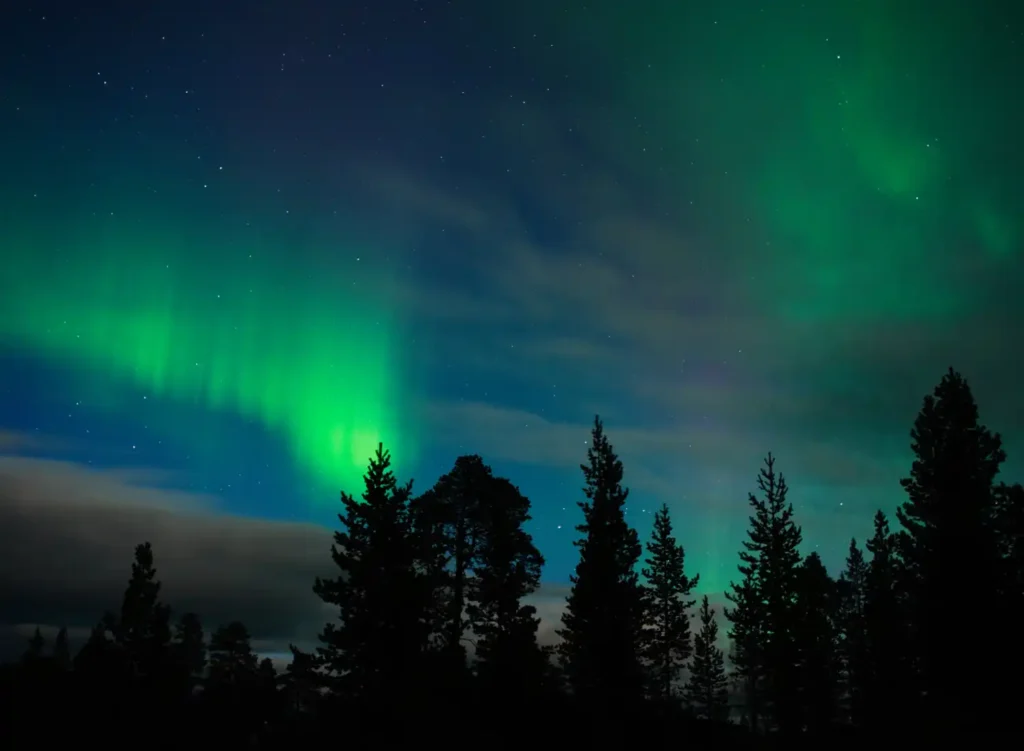
How to Photograph the Northern Lights
Now that you are all packed up for your nighttime adventure, it is time to discuss how to shoot the Northern Lights with your camera gear. We absolutely love astrophotography and find it (on a calm and cosy night) to be such a meditative exercise. Just yourself and the stars out on the hills at night, it can be a relaxing and humbling experience to sit and watch the stars move across the sky.
It is for this reason that night photography is one of my favourite activities and when the weather gods bless us up in Scotland there is nothing I love more than heading off on an astro mission. Here is my step by step that I use when planning to shoot the stars or the northern lights, including how to know where to point the camera, how to focus the camera, what settings I use, and then how I dit the photos. Read the full guide to photographing the night sky here.
Safety Tips for Chasing the Northern Lights
As this is a night time activity in the dangerous highlands of Scotland, it goes without saying that extreme care and preparation much be taken before heading out on any night mission. Below are some tips for staying safe when you are out and about in Scotland at night.
Let friends or family know where you are going and DON’T change those plans
It is so important when taking part in ANY outdoor activity in Scotland that people know where to look for you in case you don’t come home. The highlands of Scotland are a huge (and very dangerous place) and no amount of preparation can absolutely guarantee a safe return to your bed for the night. The simple act of a twisted ankle in the darkness of the mountains can render you helpless and without phone reception, you are going to be stuck there until daylight comes and someone comes to find you.
Always pack for a night on the hill (or in your car if you aren’t venturing more than 200m from it)
Leading on from the above, if something does happen to you, you need to be prepared for a night withstanding the harsh Scottish elements. This means packing as if you are going camping for the night if you plan to walk more than 200m from your car. If you are not going that far then the same packing should be done for a night of car camping in case you break your leg and cannot drive. We recommend packing at LEAST the below items to ensure a safe and warm night in the wilderness.
– Sleeping bag
– Emergency bag (a waterproof bag that can fit your whole body inside it)
– Map and compass
– Emergency rations (high calorie snacks, ie. chocolate)
– Hot drink in a flask (or better yet a camping stove, pot, and gas)
– Water to drink
– First aid kit and emergency whistle
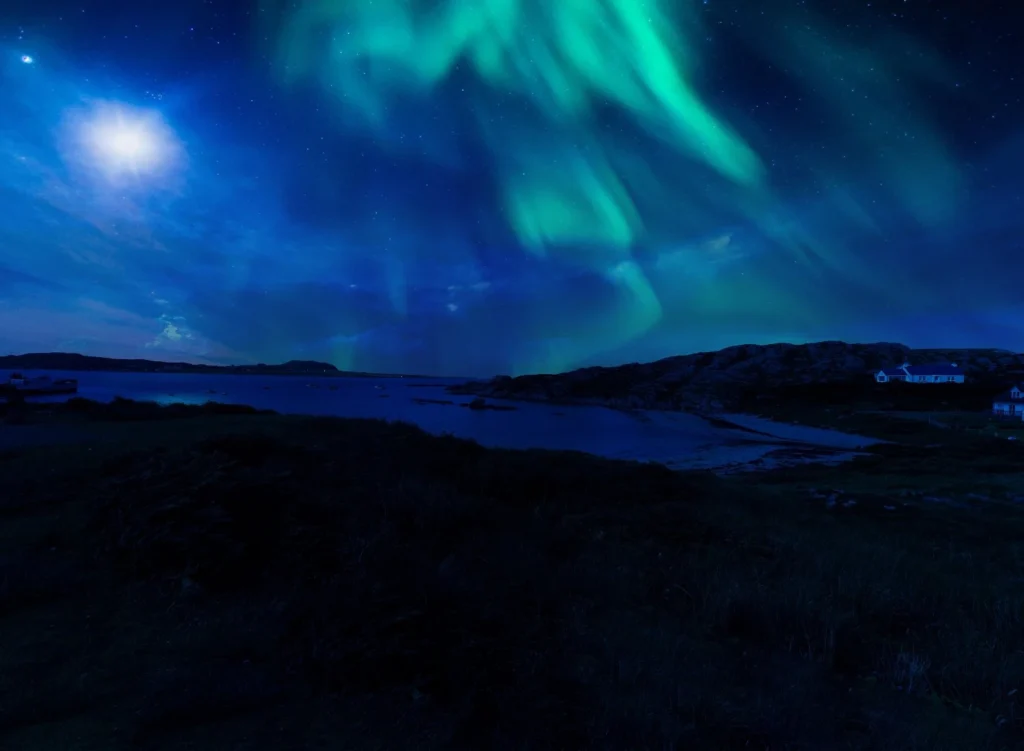
Scout your photography location in the day time first
This is another one that often gets overlooked – you need to know the terrain before you go stomping around at night. Given that some of the best places to see the aurora are by the sea, cliffs are a real danger for night time adventures. Know the layout of the terrain and plan where you will set up whilst it is bright and then head back out in the darkness. Again, the mobile app “PhotoPill” allows you to plan where and when the stars, moon, sunrise, and sunset will be using augmented reality on your phone camera, which means you will know EXACTLY where to point your camera come nightfall.

Night Photography Terms and Phrases
Black Hour: Period during nighttime photography when the sky is significantly darker than usual, revealing more stars and celestial objects.
Blue Hour: Short period of twilight before sunrise or after sunset, producing soft, diffused light for serene and magical images.
Golden Hour: Period just after sunrise or before sunset when the sun is low in the sky, casting warm and golden light to enhance colors and textures.
Star Trails: Long exposure photographs capturing the movement of stars across the night sky in a circular or curved pattern, creating mesmerising images.
Circumpolar Stars: Stars that remain perpetually above the horizon, rotating around the celestial pole.
Galactic Core: The densest and brightest region of our Milky Way galaxy, often photographed for a stunning display of countless stars creating a luminous tapestry in astrophotography.
Light Pollution: Excessive artificial lighting that hinders stargazing and astrophotography.
Deep Sky Objects: Celestial objects beyond our solar system, such as galaxies, nebulae, and star clusters.
Wide-angle Lens: Camera lens with a wide field of view, capturing expansive landscapes and the night sky.
Meteor Shower: Event where Earth passes through a debris trail, resulting in an increased number of shooting stars.
Planetary Alignment: Occurrence when multiple planets appear close together in the sky.
Dark Frame: Calibration image capturing camera sensor noise and hot pixels for noise reduction in post-processing.
Time-lapse Photography: Capturing a series of images at regular intervals to create a video sequence, showcasing changes over time.
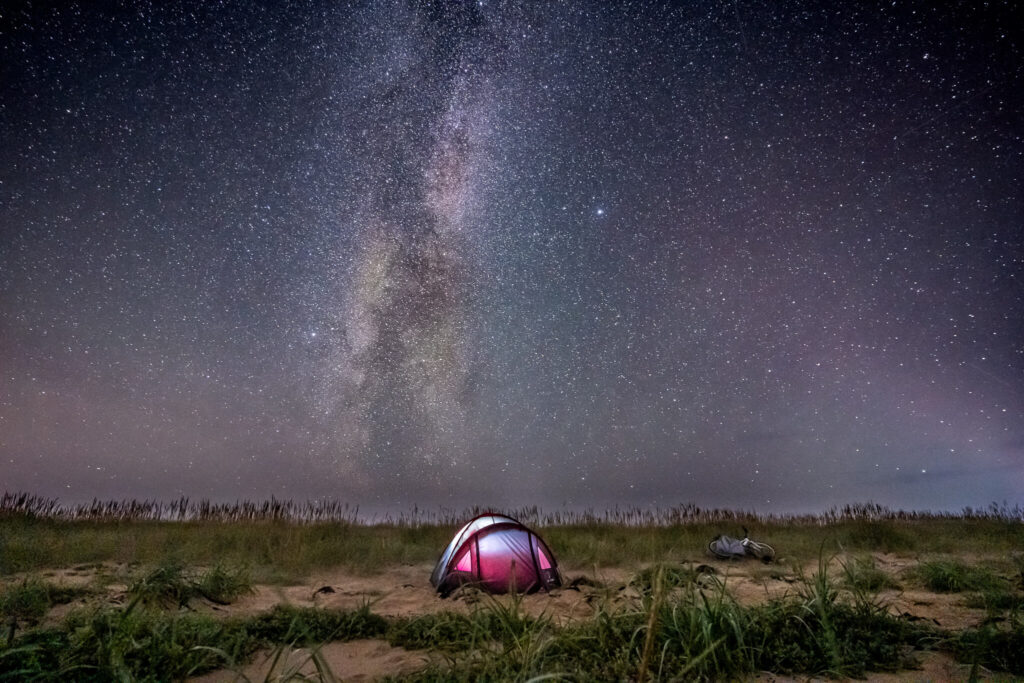
With all of this in mind, it turns out that 2024 is set to be the best year of the decade for solar activity so make the most of it in your trip to Scotland. Schedule in a night out on the hills and make the most of the peace and tranquility of the highlands for a night that you will never forget.
If you found this article useful then make sure to share it with your friends and family to help them plan their own adventure of a lifetime.
Pin it for later!

